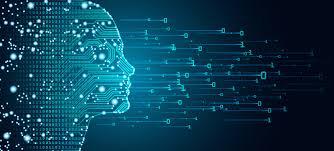
At this point in the 21st century, essentially everyone has come across the words Artificial Intelligence. The technology sounds exciting and helps us envision a better future. But very few people can actually rightly understand what Artificial Intelligence talks about. Learning Artificial Intelligence entails learning about the components within the field as well.
Table of Contents
What is Machine Learning?
One such component with immense bearing on Artificial Intelligence is Machine Learning. It is often described as a branch of Artificial intelligence that engages with computer performance in an attempt to enrich it through its own learning. So, it revolves around minimizing the need for human involvement in a process that normally does entail human involvement. This happens through the computer’s own learning with practice.
How Does Such a System Really Work?
It is not only difficult to define Machine Learning, but also to explain how it really works. There are steps of the process that need to be completed before a system of Machine Learning is really established. Here are the steps in the process:
-
Data Collection
The very first task in establishing a Machine Learning system is obviously collecting relevant data. this data may come from various sources and be in different formats. In collecting this data, you must exercise the sense to collect data that is relevant.
-
Extracting Information
The next phase in the entire process is to ensure that the data you collected is cleaned. Cleaning the data really means taking our information from the data that is meaningful to you. This often involves sifting through tons of irrelevant data to extract meaningful content and also completing information that is incomplete by using other sources of data.
-
Sampling and Splitting
Once you have the information extracted from the data, there is a need to sample out this data. This means using a portion of data based upon some predefined characteristic. Even from the sample, you must split the information into two different sets. One of these sets is to be used to train the algorithm to solve the problem in question. The other set is to be used to evaluate the solution.
-
Training the System
In training the system, mathematical solutions in the form of algorithms are used to assess the perfect way to achieve the goal. How this happens, depends on the model used. Once the right mathematical function is found, the second data set comes to play and assesses the solution and if need be, adjusts its parameters automatically, which is called backpropagation.
-
Evaluations
However, this is not all the training that the system will get. Once it has worked on the two categories of sample data, it will be trained against data that it has not yet seen. This allows for more adjustments as the new data is processed. This is essential as human evaluations of the solution also come into play.
-
Optimize
Once the right solution and path is found, optimization is needed to ensure that the best method is used that is as swift as possible.







